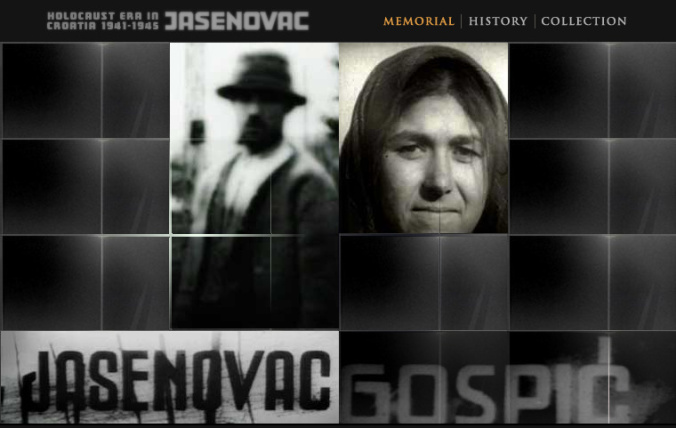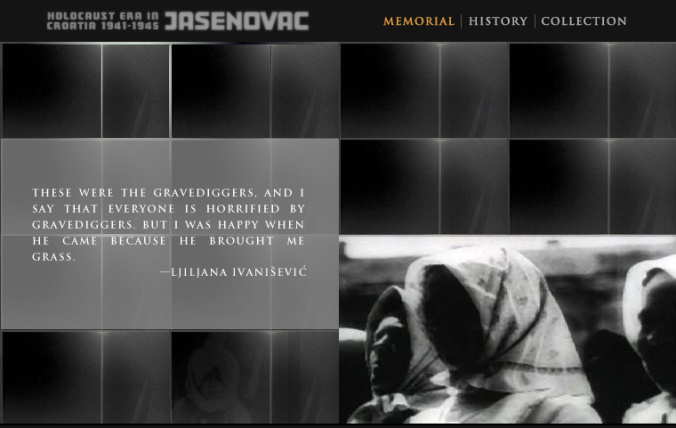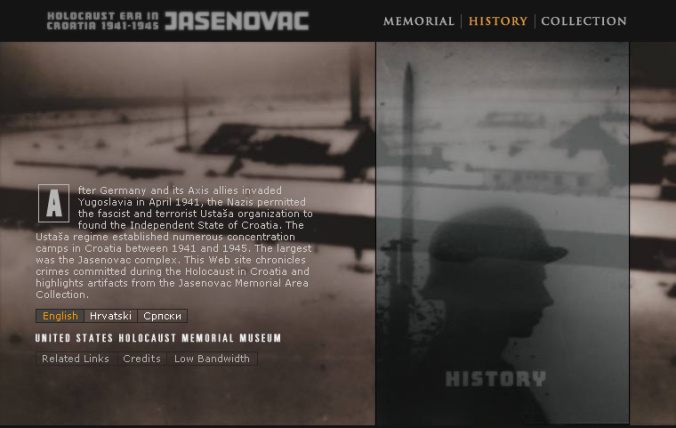Holocaust Era in Croatia: Jasenovac
This site chronicles crimes committed during the Holocaust era in Croatia, memorializes the victims, and archives artifacts from the Jasenovac Memorial Area Collection.
After Germany and its Axis allies invaded Yugoslavia in April 1941, the Nazis permitted the fascist and terrorist Ustaša organization to found the Independent State of Croatia. The Ustaša regime established numerous concentration camps in Croatia between 1941 and 1945. The largest was the Jasenovac camp complex. In collaboration with the United States Holocaust Memorial Museum, this site provides historical context for the collection of camp artifacts and the victims it memorializes. The Memorial section is a moving audiovisual collage of images and oral histories from Jasenovac detainees. The Collection section displays never-before-seen artifacts, including documents, photographs, maps, film, transcripts, testimony, and personal objects. The History section educates visitors about the origins of the independent state of Croatia, its targeted populations and concentration camps, and the research being done today. The site is a triptych that uses three distinct modes of interactivity: the Memorial uses sounds, words, and images to create a poetic experience; the Collection provides unmediated access to the archives; and the History section educates visitors about the broader story of the Holocaust in Croatia. These three interactive experiences were designed to reflect the mission of the United States Holocaust Memorial Museum: remembrance, education, and conscience.




